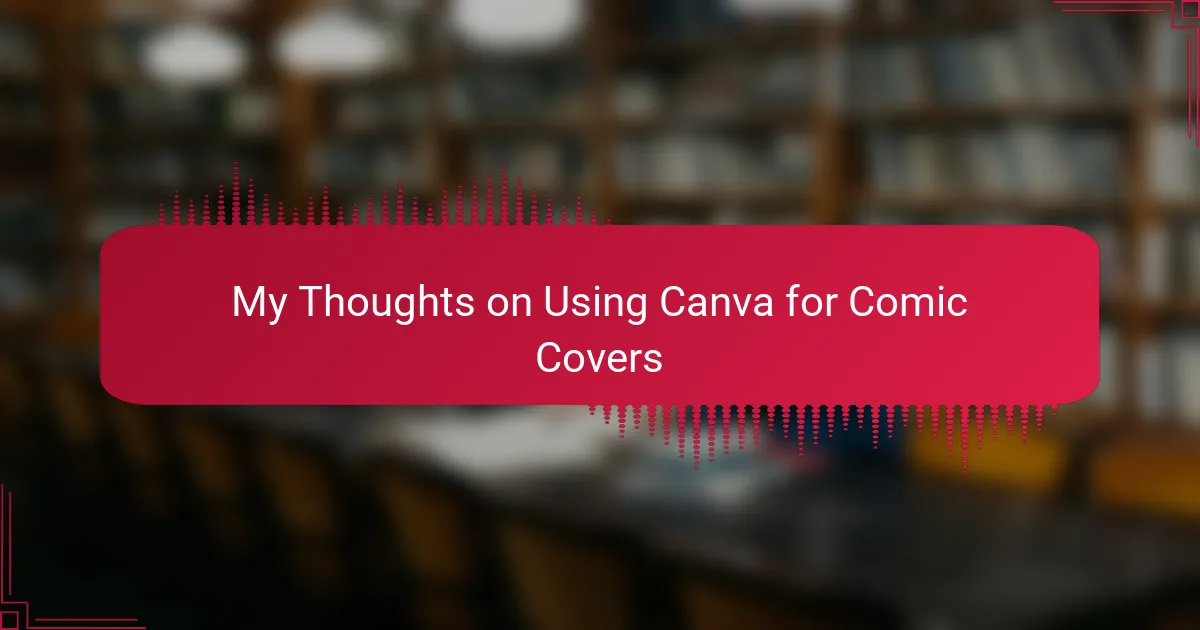Key takeaways
- Effective comic book covers should combine visual appeal, clear typography, and genre representation to attract readers.
- Canva offers user-friendly features such as customizable templates, graphics, and collaboration tools, enhancing the design process for creators.
- Keeping the target audience in mind and embracing simplicity can lead to impactful and resonant designs.
- Successful comic covers like “Saga” and “The Walking Dead” showcase how strong visuals can effectively convey a story’s essence and themes.
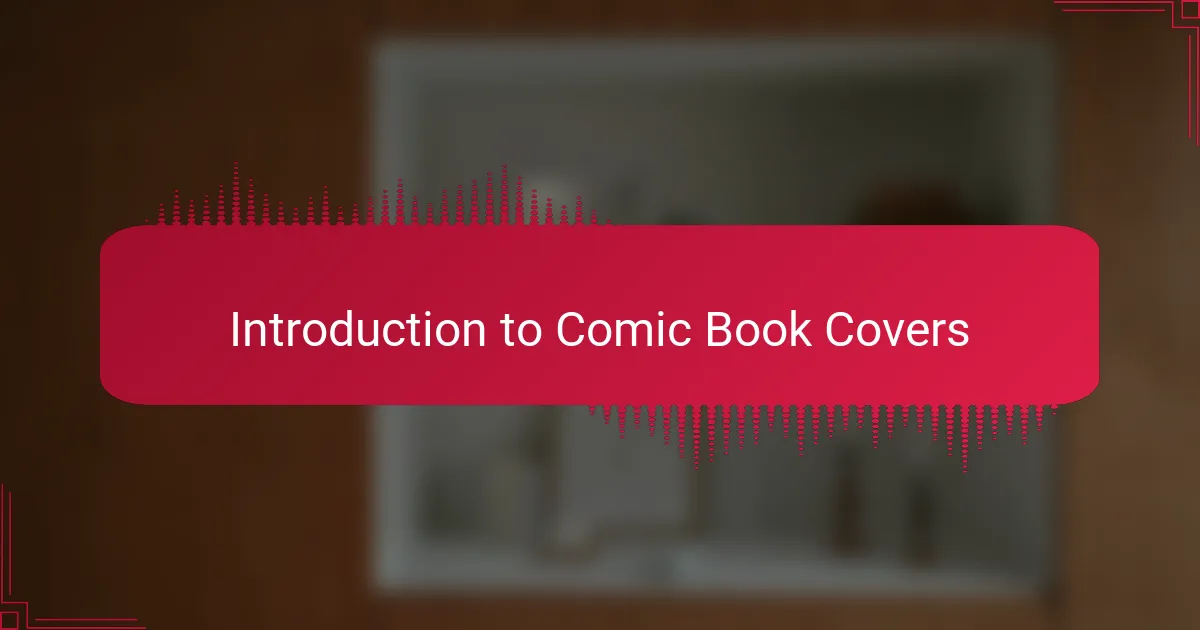
Introduction to Comic Book Covers
Creating a comic book cover is an essential aspect of the storytelling journey. It’s like the window to your world, inviting readers to step in and explore the narrative you’ve crafted. I remember my early days as a comic book author, feeling the weight of designing that perfect cover. It was a mix of excitement and anxiety—how do you encapsulate a whole story in a single image?
To achieve that striking aesthetic, many authors now turn to tools like Canva. This platform is user-friendly and packed with features that cater specifically to creatives like us. Here are some considerations when designing a comic book cover:
- Visual Appeal: The cover must grab attention with bold colors and compelling graphics.
- Title Readability: Clear and striking typography can make a significant difference—it should stand out without overshadowing the artwork.
- Genre Representation: The cover should accurately reflect the genre, whether it’s a sci-fi epic or a whimsical fantasy.
- Personal Style: Incorporating your unique artistic style fosters a connection with readers and sets the tone for what’s inside.
- Market Trends: Keeping an eye on trends can help ensure your cover resonates with current audiences while retaining originality.
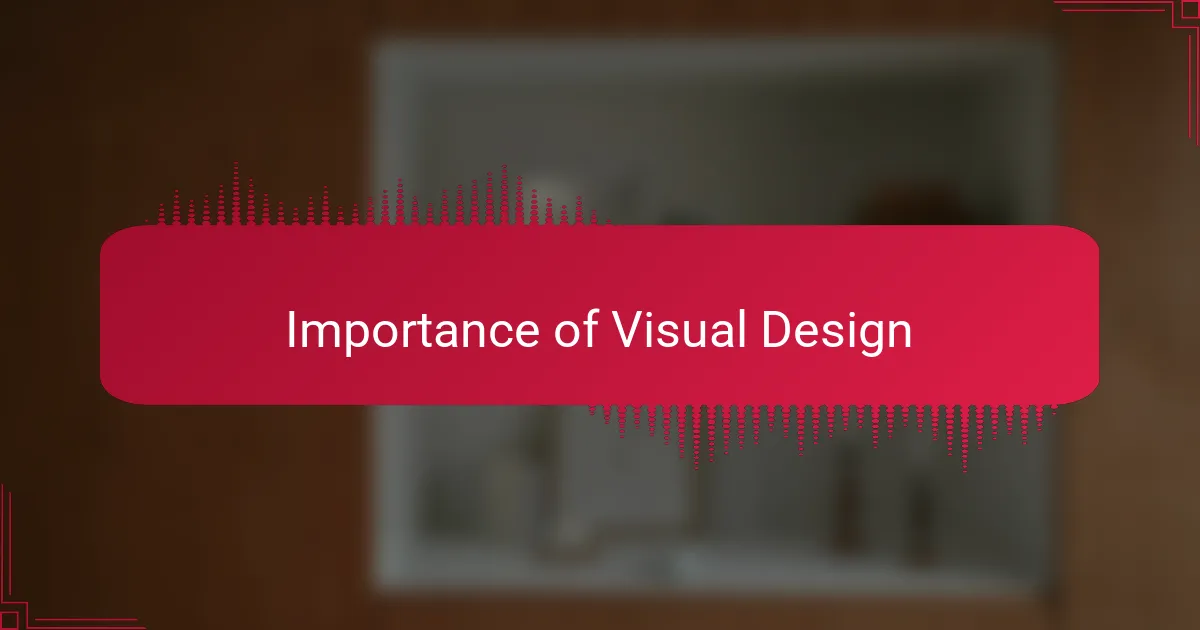
Importance of Visual Design
Visual design isn’t just decorative; it’s a critical communicator of your story’s essence. I’ve learned firsthand that a well-crafted cover can ignite curiosity and propel a reader to pick up your work. Have you ever passed by a book that simply called out to you? That’s the power of visual design at play.
When I was navigating the cover design process, I quickly realized the importance of integrating visuals that encapsulate my comic’s genre. Each choice, from colors to fonts, creates an emotional connection. For instance, a vibrant palette can evoke excitement, while muted tones might suggest a deeper, more introspective narrative. I often ask myself, “What feeling do I want my readers to experience at first glance?” The right design answers that question beautifully.
Moreover, the impact of visual design can extend beyond just the cover. It sets the mood for the entire reading experience, acting as a bridge between the reader’s anticipation and the story inside. I can’t stress enough how crucial it is to spend time refining this aspect. After all, a captivating cover is often what transforms casual browsers into enthusiastic readers.
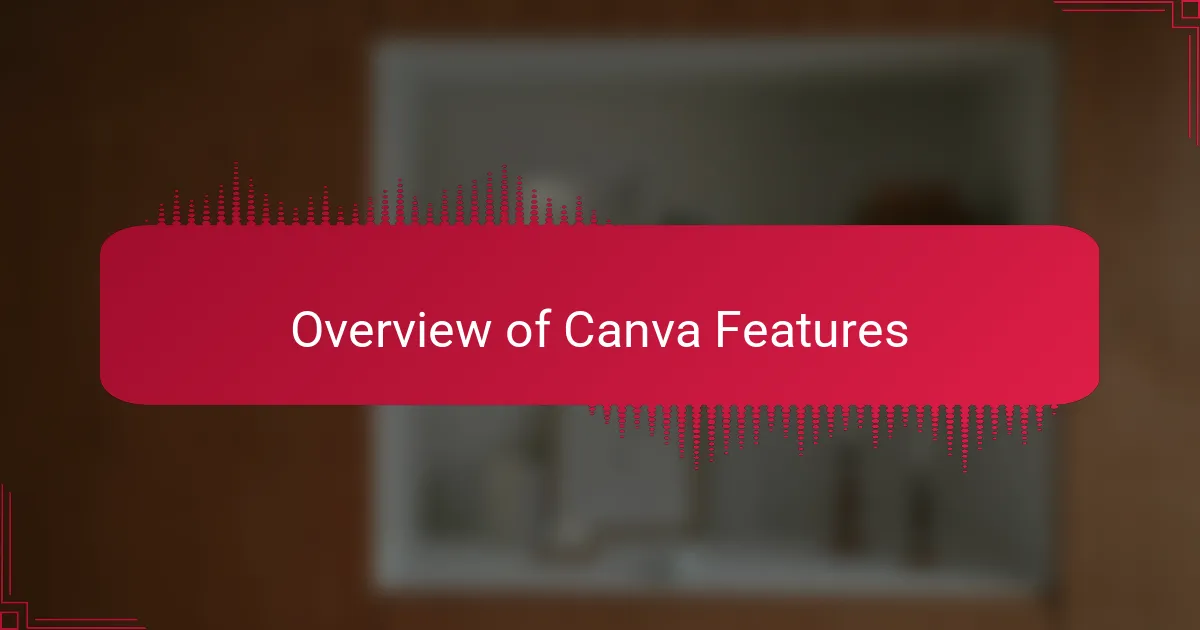
Overview of Canva Features
Canva is a treasure trove of features that can really streamline the comic cover design process. One aspect I particularly appreciate is the extensive library of templates tailored for various genres. When I was looking for inspiration for my latest cover, I found a template that sparked my creativity and perfectly underscored the theme I wanted to convey. It’s like having a personal designer at your fingertips!
The platform also offers a variety of customizable graphics, fonts, and color palettes. This flexibility allows me to experiment without the pressure of using complicated software. I recall trying out different styles until I found the exact font that matched the mood of my comic. It was enlightening to see how a simple typeface choice can transform an entire cover’s aesthetic.
And let’s not forget the collaborative features! Canva allows you to share your projects with others, which was vital when I sought feedback from fellow creatives. I find that discussing design choices with peers leads to a blend of ideas that enhances the final product. Have you ever considered how collaboration can elevate your work?
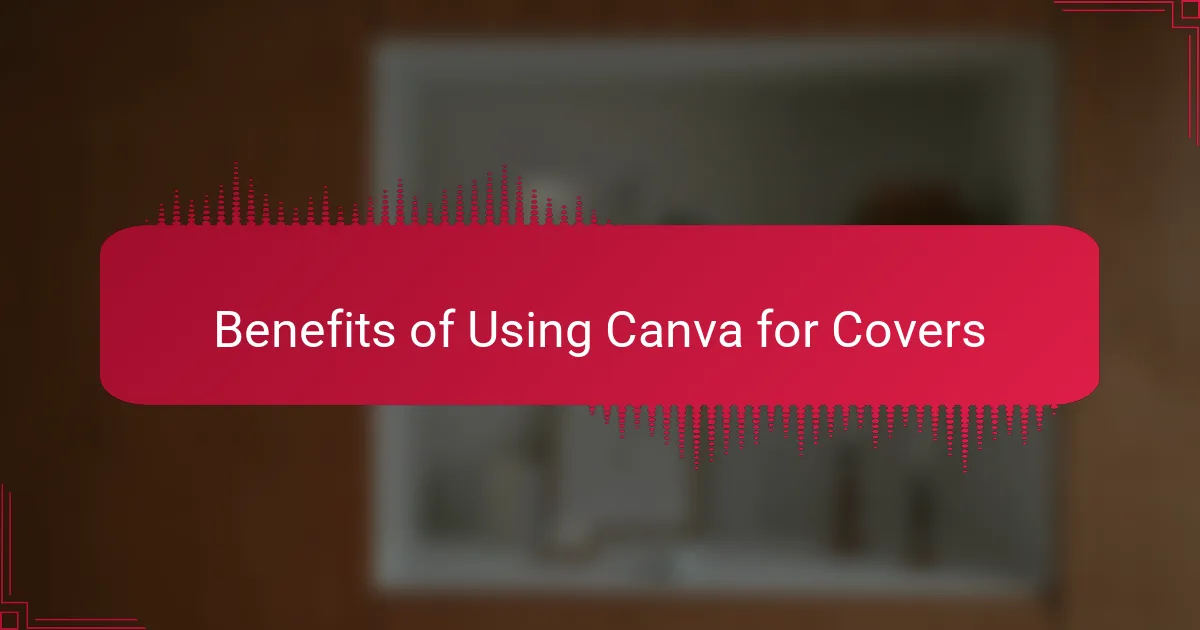
Benefits of Using Canva for Covers
Using Canva for comic book covers comes with numerous benefits that can significantly enhance your design experience. For instance, I love that the platform is incredibly intuitive, which means I can dive right into creating without wasting time figuring out complicated software. It was a game-changer when I first started; I could focus on the creative aspect without feeling overwhelmed by technical hurdles.
One of the standout features for me is the access to a vast library of professional-quality graphics and fonts. I remember scrolling through various options and discovering the perfect illustration that represented my comic’s theme. It felt like I was tapping into a pool of limitless possibilities, allowing me to create something unique and captivating almost effortlessly.
Additionally, the ability to collaborate in real-time with other creatives stands out. I often invite fellow artists to provide feedback on my designs, which has led to remarkable improvements in my covers. Have you thought about how valuable outside perspectives can be in your creative process? Sharing and discussing ideas through Canva has not only enriched my designs but also fostered a sense of community that I cherish.
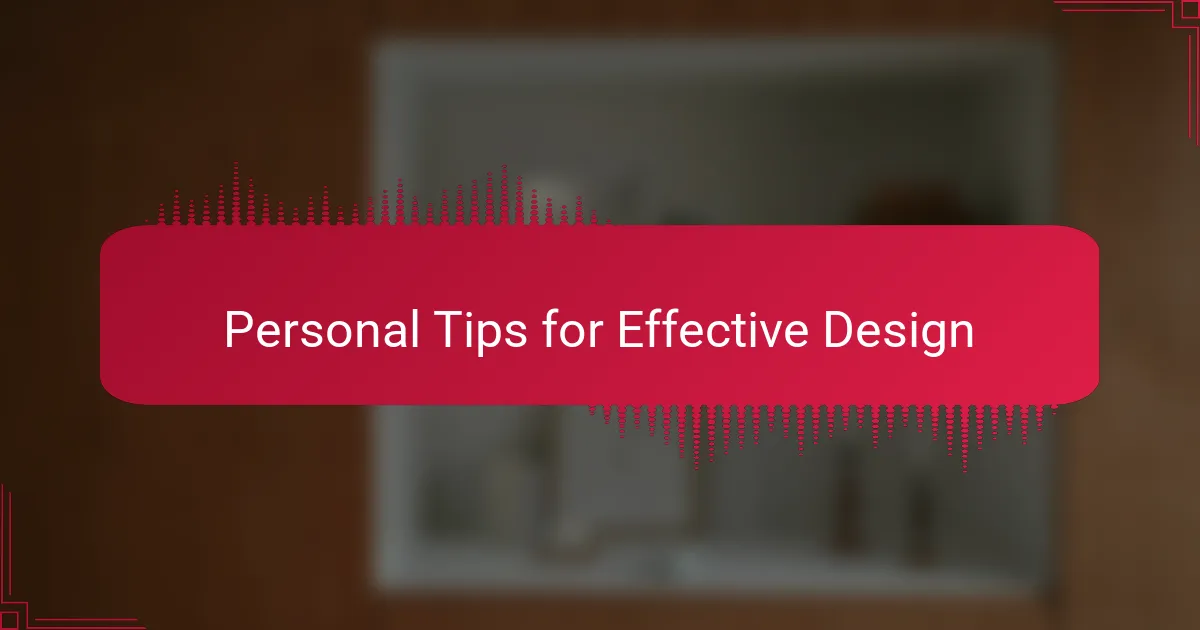
Personal Tips for Effective Design
To create an effective design, one of my top tips is to always keep your target audience in mind. When I designed my first comic cover, I really had to ask myself, “Who are my readers?” Understanding their preferences helped me choose colors and images that would resonate with them. If you can get into the mindset of your audience, it can lead to designs that speak directly to their interests.
Another aspect that I find crucial is to simplify your design. In the beginning, I often overcomplicated things, cramming too much into one cover. I learned that sometimes less is more. I remember focusing on a single, powerful image that encapsulated my comic’s essence, letting the artwork shine while ensuring the title remained clearly visible. This clarity allowed potential readers to immediately grasp the vibe of the story.
Finally, I encourage playing around with different layouts and compositions in Canva. Experimentation can unlock hidden creativity. Once, I stumbled upon an arrangement of elements that seemed accidental but turned out to be striking. It made me realize how much fun it is to just try new ideas without the fear of making mistakes. What have you discovered when you let your creativity roam free?
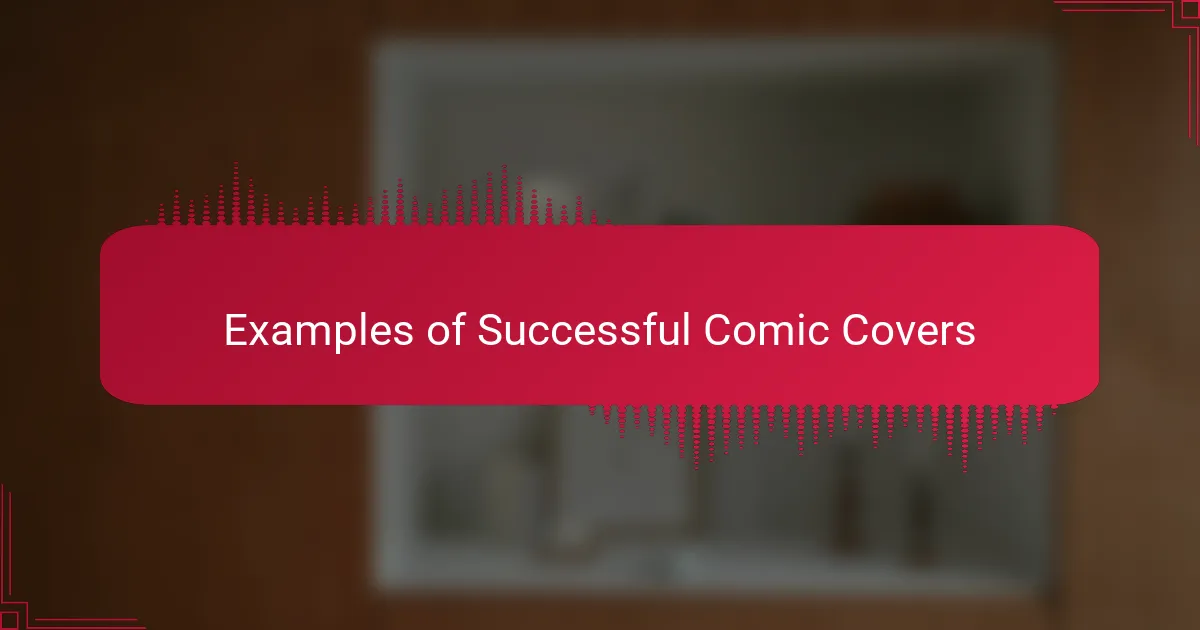
Examples of Successful Comic Covers
Successful comic covers often create a lasting impression, like the eye-catching cover of “Saga” by Brian K. Vaughan and Fiona Staples. The vibrant colors and striking graphic elements not only allure readers but also effectively convey the epic scope of the story. I remember picking it up and being instantly drawn in, wondering how such a diverse range of characters could intersect in such a compelling narrative. Isn’t it fascinating how a single image can spark curiosity?
Another example that stands out to me is the minimalist approach taken by “The Walking Dead.” The covers often feature stark, haunting imagery that reflects the series’ themes of survival and humanity amid chaos. I can still vividly recall how one cover with its simple red background and black silhouettes made my heart race. This simplicity was powerful—it told me everything I needed to know without over-explaining. How effective is it to convey depth through minimalism, right?
On the indie front, I think of “Lumberjanes” and its playful, colorful designs. Each cover bursts with energy and reflects the adventurous spirit of the series. When I first saw it, it reminded me of summer camp adventures, filled with friendship and whimsical encounters. It made me smile and instantly connected with the youthful exuberance I longed for. Don’t you think that tapping into nostalgia can be a fantastic way to engage readers?

Conclusion and Final Thoughts
Using Canva for comic book covers has been a transformative experience for me, allowing me to tap into my creativity without the stress of complex tools. I’ve found that the ability to experiment with different templates and designs not only enhances my productivity but also keeps the creative process enjoyable. Have you ever had the thrill of discovering a design that truly speaks to your narrative? That’s the kind of joy Canva can bring.
Ultimately, the success of a cover lies in how well it represents your story while resonating with the audience. I’ve learned to balance my personal style with visual elements that are appealing to readers. Every time I see my cover displayed, it reminds me of the connection between the art and the heart of the story within. Doesn’t that sense of accomplishment make all those late-night design sessions worth it?
In conclusion, embracing tools like Canva can elevate the quality of your comic covers significantly. My journey has shown me that design is not just about aesthetics; it’s about communication and storytelling. How do you want your cover to communicate your unique story? By asking ourselves these questions, we can create covers that are not only visually stunning but also deeply meaningful.
